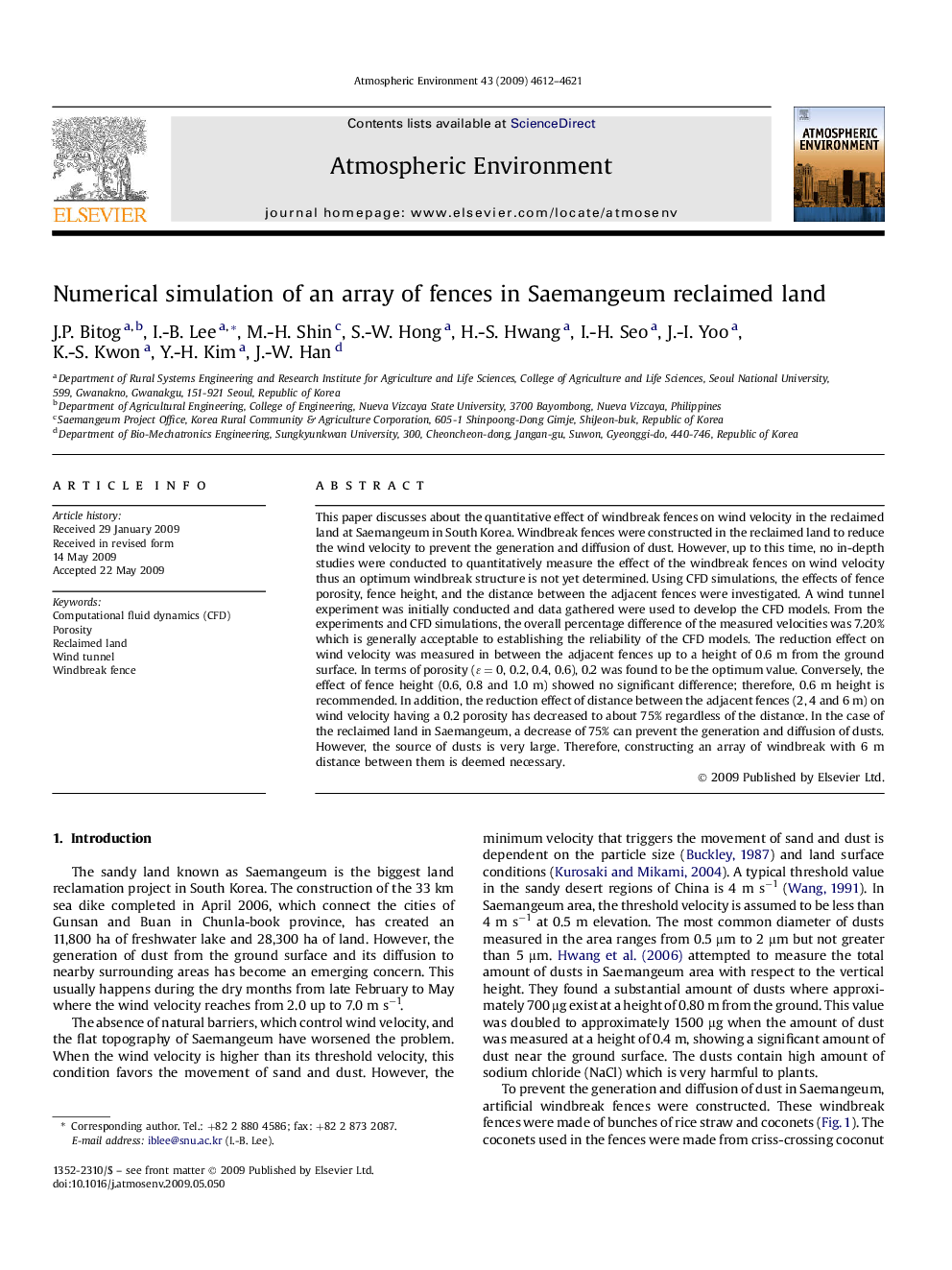| Article ID | Journal | Published Year | Pages | File Type |
|---|---|---|---|---|
| 4440756 | Atmospheric Environment | 2009 | 10 Pages |
This paper discusses about the quantitative effect of windbreak fences on wind velocity in the reclaimed land at Saemangeum in South Korea. Windbreak fences were constructed in the reclaimed land to reduce the wind velocity to prevent the generation and diffusion of dust. However, up to this time, no in-depth studies were conducted to quantitatively measure the effect of the windbreak fences on wind velocity thus an optimum windbreak structure is not yet determined. Using CFD simulations, the effects of fence porosity, fence height, and the distance between the adjacent fences were investigated. A wind tunnel experiment was initially conducted and data gathered were used to develop the CFD models. From the experiments and CFD simulations, the overall percentage difference of the measured velocities was 7.20% which is generally acceptable to establishing the reliability of the CFD models. The reduction effect on wind velocity was measured in between the adjacent fences up to a height of 0.6 m from the ground surface. In terms of porosity (ɛ = 0, 0.2, 0.4, 0.6), 0.2 was found to be the optimum value. Conversely, the effect of fence height (0.6, 0.8 and 1.0 m) showed no significant difference; therefore, 0.6 m height is recommended. In addition, the reduction effect of distance between the adjacent fences (2, 4 and 6 m) on wind velocity having a 0.2 porosity has decreased to about 75% regardless of the distance. In the case of the reclaimed land in Saemangeum, a decrease of 75% can prevent the generation and diffusion of dusts. However, the source of dusts is very large. Therefore, constructing an array of windbreak with 6 m distance between them is deemed necessary.
